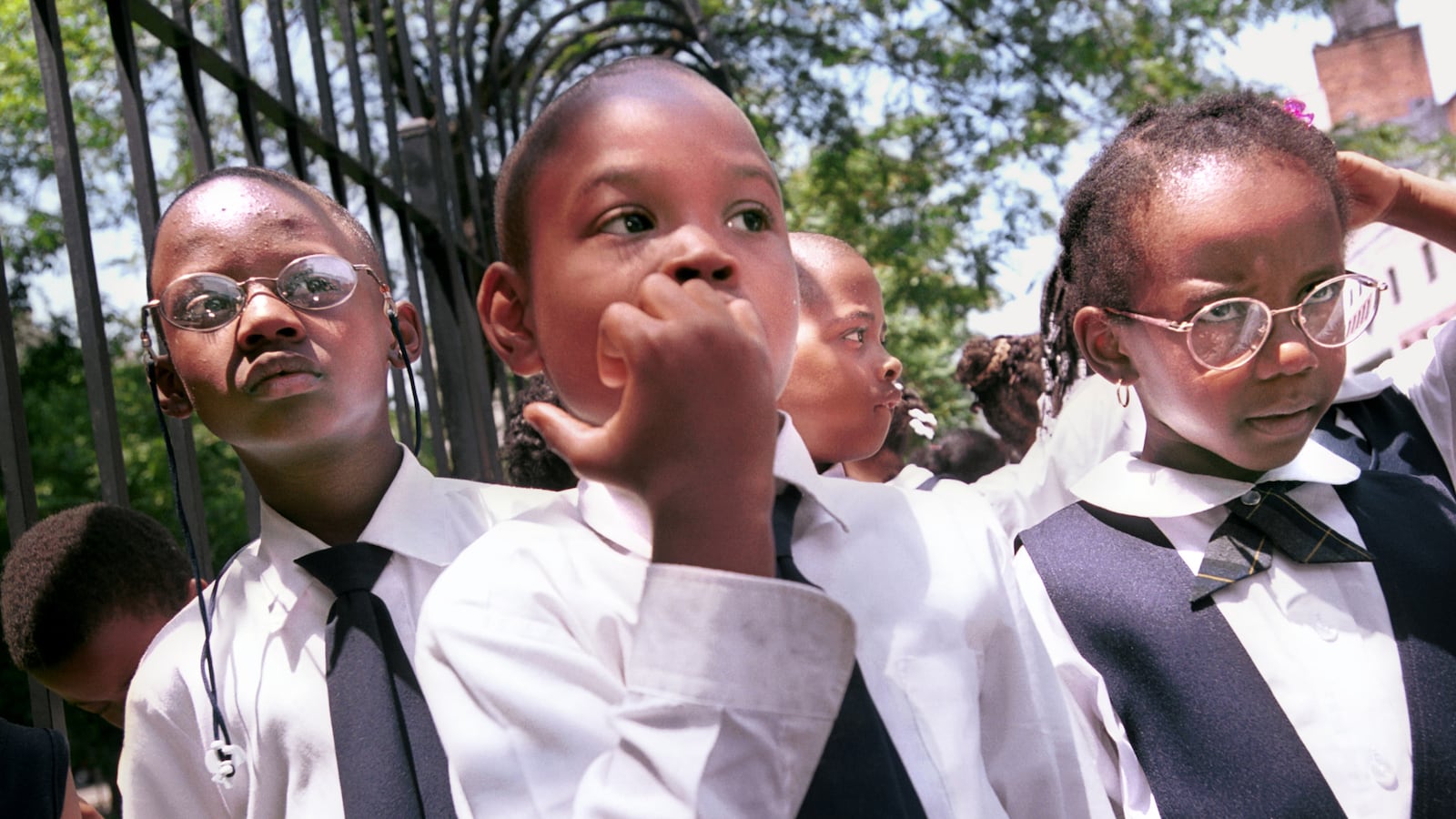As we reach the 60-year anniversary of the Brown v. Board of Education decision Saturday, a great many will complain that after all this time, segregation is still rampant in America’s schools. That is, we’re supposed to bemoan the fact that black kids are in school with one another instead of with white ones.

I say it’s time we reexamined this take on what segregation means, because it verges on a grievous insult to black people. What Brown sought to undo was blacks attending classes with other black kids in schools that were so often vastly inferior to the ones white kids went to. That, of course, was right and just.
However, the desegregation imperative in the wake of this has led, through a kind of mental mission creep, into a general horror at the very idea of all-black schools, period. That’s an eerier notion than we are often told.
We are meant to cringe at the sight of a photo of an all-black classroom and ask cynically where the white kids are. Oh, no one puts it just that way. But this is indeed the zeitgeist—one need only consider typical pieces on school re-segregation in our times, where the mere fact of black kids learning together is considered unfortunate and backwards, such as here and here.
But the lawyers arguing Brown did not demonstrate that black kids need white kids next to them to learn better. This is not a renegade observation; it is a commonplace among experts on the case. And today, the general consensus among experts, as quiet as it’s kept, is that learning with white kids has only a modest positive effect on black students’ performance, including almost none on math (and less as students get older). Take a look at this study, which shows that beyond the cohort of especially high-achieving black kids, having white kids around loses its mojo completely.
Blacks at the time of Brown brought into our present day would be baffled, and even irritated, by the idea that black kids are automatically worse off when white kids aren’t around. Long before the 1960s, and deep in the heart of Jim Crow, students at all-black Dunbar High in Washington, D.C., often outscored the city’s white schools on standardized tests as early as 1899—that is, when Plessy v. Ferguson of 1896 was a current event.
Most big American cities had schools of such caliber where a white student was never seen. My mother went to Booker T. Washington in Atlanta in the 1940s. There were Frederick Douglass in Baltimore, P.S. 91 in Brooklyn, McDonough 35 in New Orleans, and so very many others. And note: None of these schools were anything like awash in funds.
The idea that a classroom full of black kids is something to shake your head at is not wisdom incarnate. It wasn’t then, and it isn’t now, when there are schools such as the KIPP (Knowledge Is Power Program) academies where whole schools of brown faces kick serious scholastic butt.
And for whatever it’s worth, black kids calling each other “white” for liking school only started in desegregated schools, and it’s more common today in large integrated ones. Black kids learning together can look quite attractive, then, when we adjust the lens.
Yet the idea seems to be that, alas, black kids simply can’t learn together. We hear continually how awful “segregation” in schools is, and regular plaints at how tragic it is that there actually isn’t any way that America could make all of its classrooms embody the rainbow ideal.
Now, certainly, we have to acknowledge realities. KIPP academies and their like, with their furiously dedicated teachers and strict discipline, are great, but even founder David Levin has admitted that there is no way to scale KIPP up to the point that every inner-city child has access to such education.
There is even room for espousing integration in the pre-school years, if we’re talking about the white kids being more likely to be middle-class ones, as studies show that black kids pick up a richer vocabulary from them at this crucial developmental time.
But beyond this early stage, you would think that we had no idea how to make poor black kids learn together in a classroom. But we have known how to teach poor kids how to read for 40 years. Instead of murmuring on about how sad it is that so many black kids have to go to school with each other, it’s time to think about one of America’s best kept secrets, the Project Follow Through reading program.
It was developed in the early 1970s amidst a government-sponsored investigation by Siegfried Engelmann, who is still around and working, and wondering when the nation is going to take advantage of what he discovered so long ago, resolutely ignored by education schools and experts.
Project Follow Through compared nine teaching methods and tracked their results on 75,000 children from kindergarten through third grade. It found that the Direct Instruction (DI) method of teaching reading, based on sounding words out rather than learning them whole (phonics) and on a tightly scripted format emphasizing repetition and student participation, was vastly more effective than any of the others.
For poor kids. And yes, that included black ones. DI taught even 4-year-olds to understand sounds, syllables, and rhyming. Its students entered kindergarten reading at a second-grade level. The mean IQ among them went up 25 points. That sort of thing happened at nine other schools, too. It has continued to in Houston, Baltimore, Milwaukee, and other cities—it has never failed. Period.
In 2001, students in the mostly black Richmond district in Virginia had rather horrid reading scores. DI made it so that in four years, three-quarters of black students passed the third-grade reading test. Meanwhile, in wealthy Fairfax County, where DI was bypassed, only 3 in 5 black students passed the reading test.
So, what was that about a classroom full of black kids being cause for alarm?
We need a new meme. Integration has its good points. It’s happening all around us. But when it comes to the classroom, we need to get comfortable with the idea of working toward what we might call “equal even if separate.”
Otherwise, we’re stuck with the soft bigotry of thinking black kids are the only ones in human history who can only open their minds when there aren’t too many other people like them in the room. It’s unclear how that qualifies as progressive thought.






